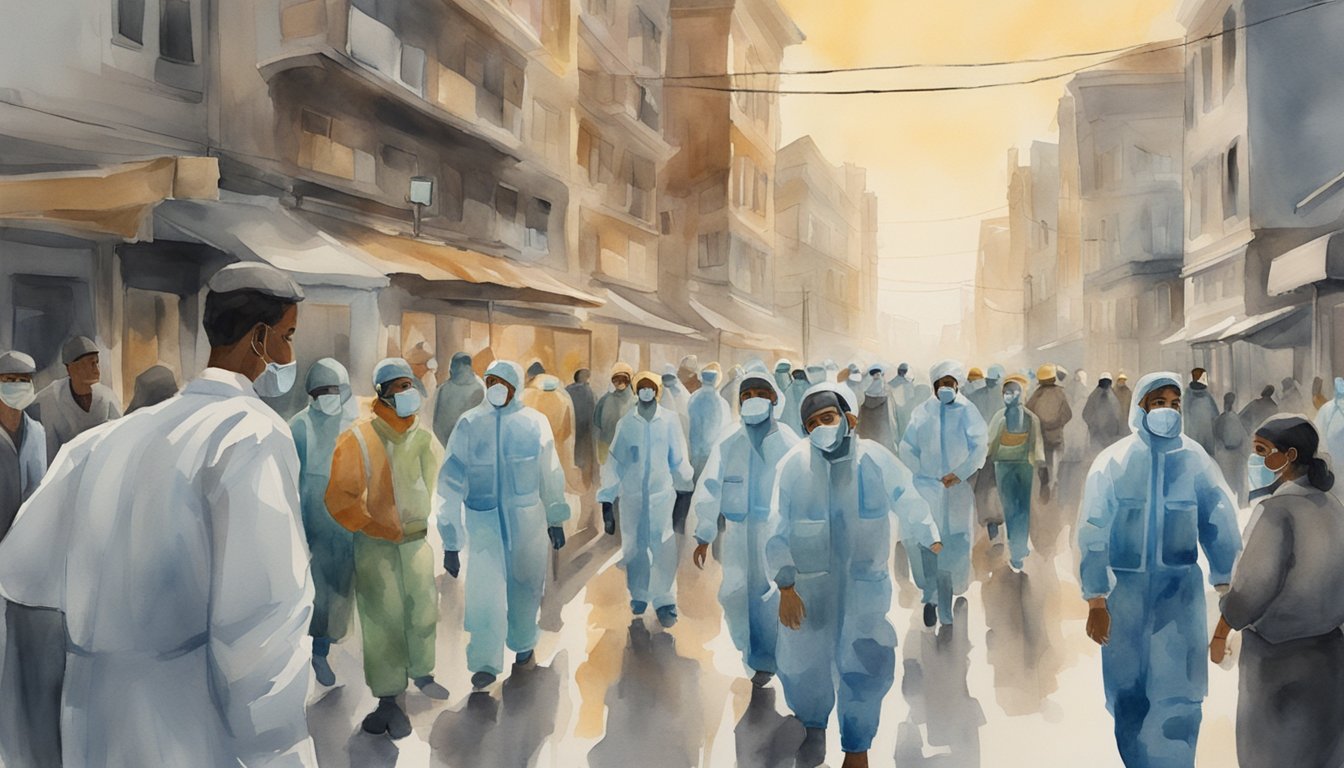The Life of Mary Mallon
In this section, we’ll explore Mary Mallon, better known as Typhoid Mary, from her early years in Cookstown, Ireland, to her impact on public health policies. The journey of Mary Mallon encapsulates themes of immigration, public health crises, and the balance of individual rights with community safety.
Early Years and Emigration
Mary Mallon was born on September 23, 1869, in Cookstown, County Tyrone, Ireland. She emigrated to the United States in 1883, joining the throngs of Irish immigrants seeking better opportunities.
Mary Mallon’s Career as a Cook
Upon arriving in New York, Mary found employment in the kitchens of wealthy families. Her career as a cook was marred by repeated typhoid outbreaks among those she served.
Discovery and Incarceration
In 1907, sanitary engineer George Soper linked Mallon to multiple typhoid outbreaks. Subsequently, she was forcibly quarantined on North Brother Island and spent several years in isolation at Riverside Hospital.
Legal Struggles and Public Perception
Mallon’s detainment led to a series of legal struggles that questioned her treatment. As public perception shifted, she was labeled “the most dangerous woman in America,” resulting in widespread prejudice.
Mary Mallon’s Final Years
After being released and later re-quarantined following another outbreak, Mallon lived her remaining years on North Brother Island. In 1938, she suffered a stroke and passed away.
Cultural Legacy
Mary Mallon’s story has become a significant part of American history. Historians and health experts still discuss her case when exploring public health policies and personal liberties.
Health Impact and Response
Mallon was identified as a healthy carrier of Salmonella typhi, with estimates suggesting she infected between 51 and 122 people. This prompted a health department response that would establish precedents in epidemiology and public health.
Quarantine and Ethical Questions
Mallon’s prolonged quarantine raised ethical questions about the rights of individuals versus the protection of public health, influencing jurisprudence and ethics surrounding quarantine laws to this day.
The Typhoid Outbreaks and Public Health

In the early 20th century, New York faced a series of typhoid outbreaks that highlighted the complexities of managing infectious diseases within a growing urban population. The events brought public health to the forefront of city planning and policy making.
Understanding Typhoid Fever
Typhoid fever is caused by the bacterium Salmonella Typhi. It is a highly contagious infection that spreads through contaminated food and water. Symptoms include high fever, weakness, stomach pains, headache, and loss of appetite. If untreated, typhoid can be fatal.
The Spread through New York
The typhoid outbreaks in New York were traced back to a single individual known as Typhoid Mary, an asymptomatic carrier of Salmonella Typhi. She worked as a cook in several households including in areas like Oyster Bay and Park Avenue, unintentionally infecting those she cooked for.
Investigations and Public Safety Measures
Sanitary engineer George Soper conducted an investigation which eventually led to Mary Mallon’s identification as the source of the outbreaks. This revelation brought about strict health codes and the establishment of more robust public health practices by the New York City Health Department, led by figures such as Dr. S. Josephine Baker.
The Role of Carriers in Epidemics
An important lesson from the typhoid episodes was the role of healthy carriers in spreading disease. Mary Mallon was a “healthy carrier,” meaning she carried the bacteria but did not show symptoms. Her case changed how authorities and the medical community dealt with asymptomatic carriers.
Advancements in Epidemiology
The typhoid outbreaks spurred advancements in the field of epidemiology. New methods of tracking and controlling disease were developed, as public health officials realized the importance of preventing contamination and educating the public on hygienic practices to reduce the risk of infectious diseases.

